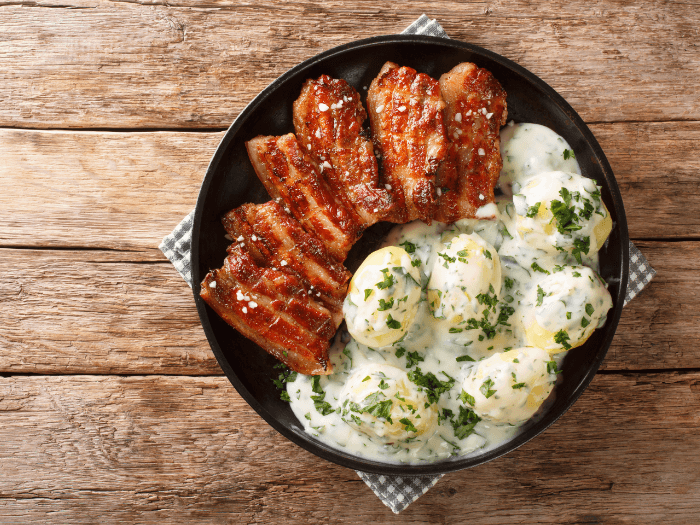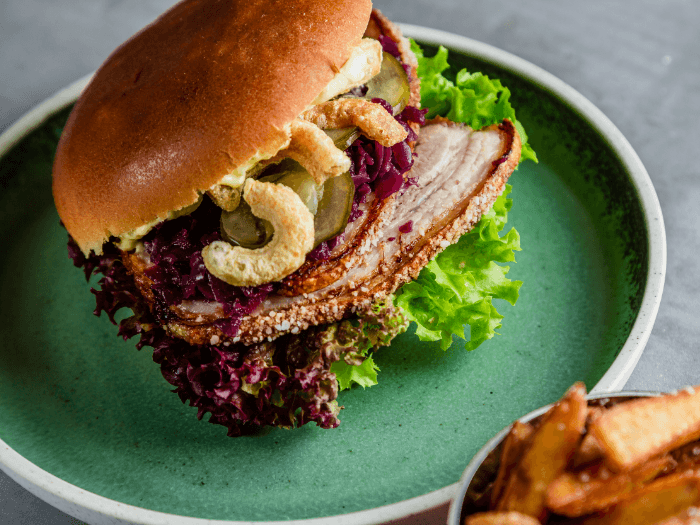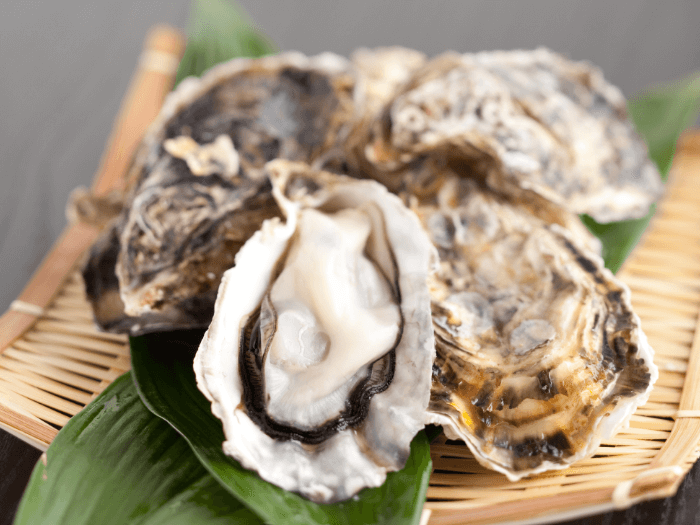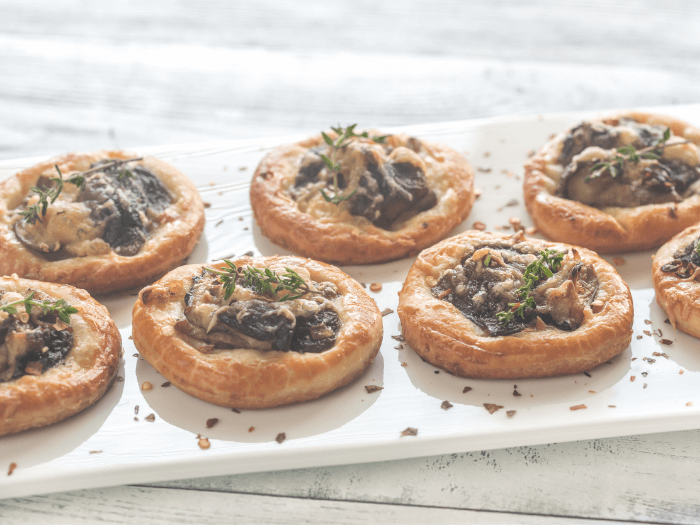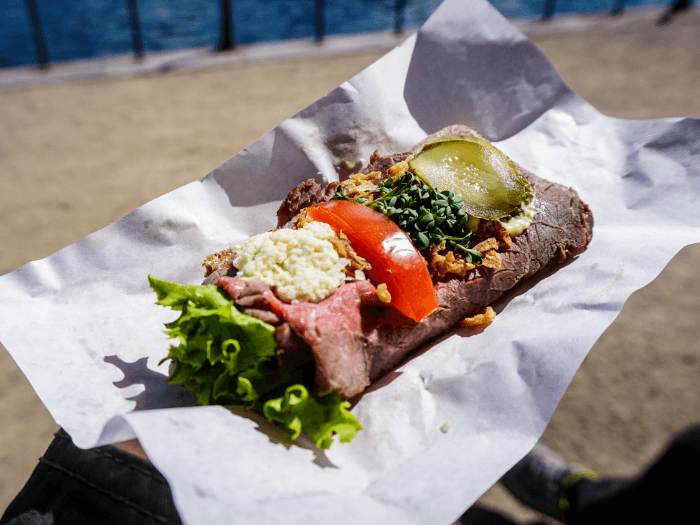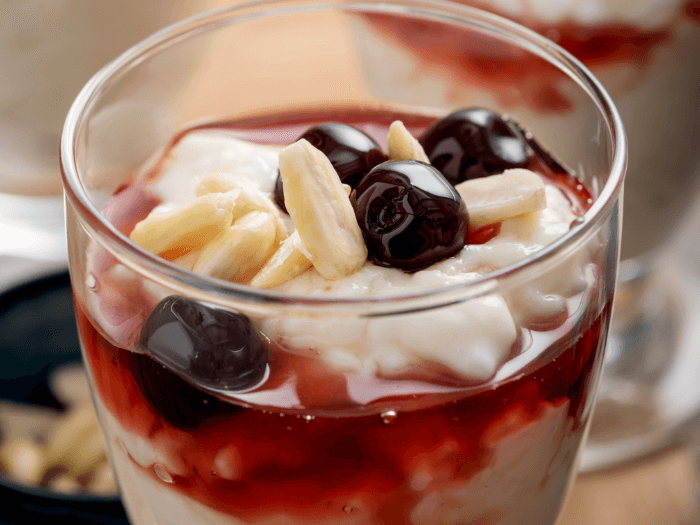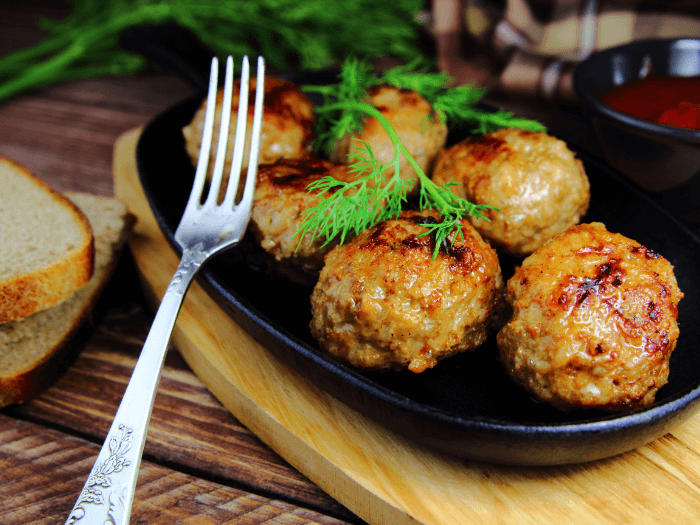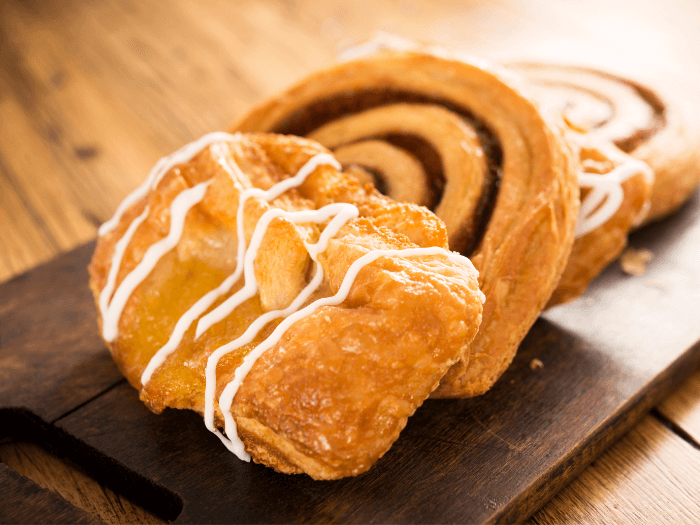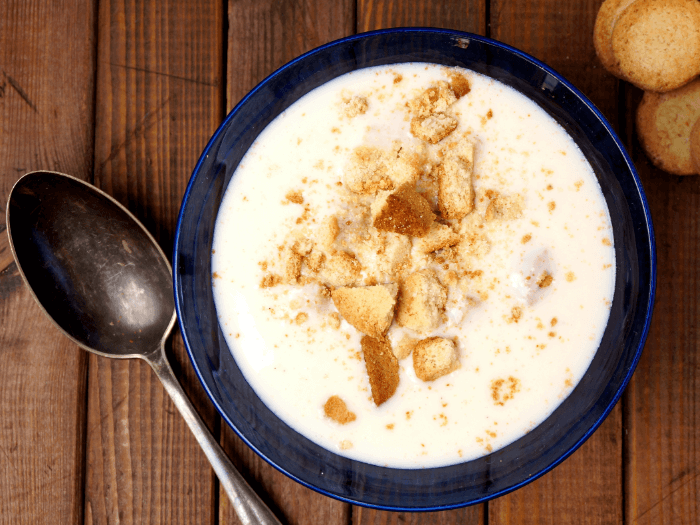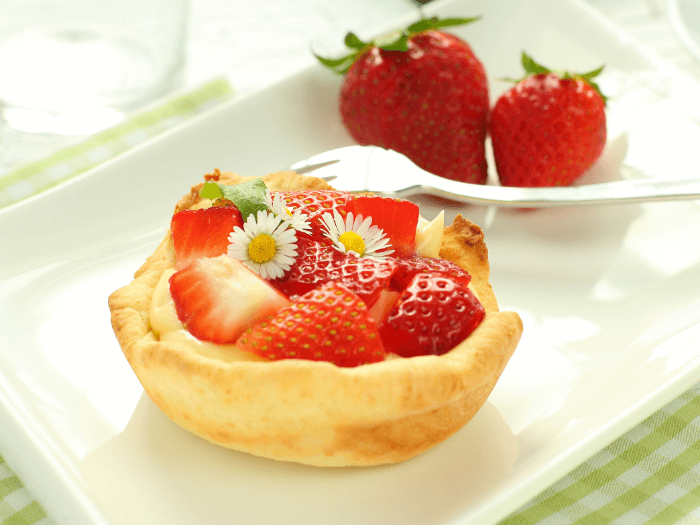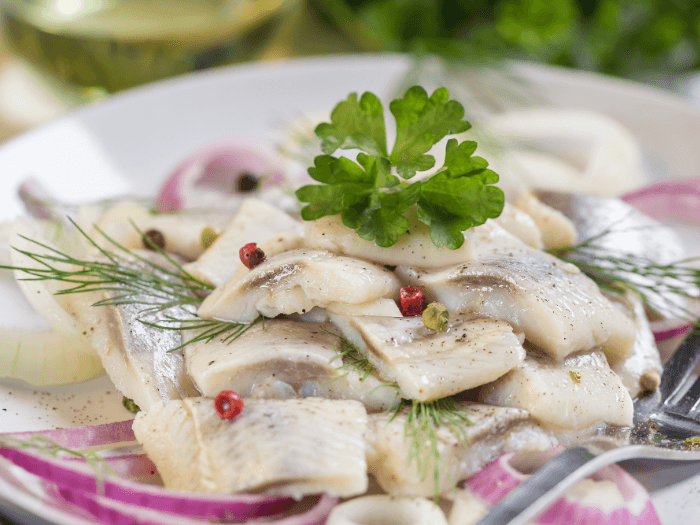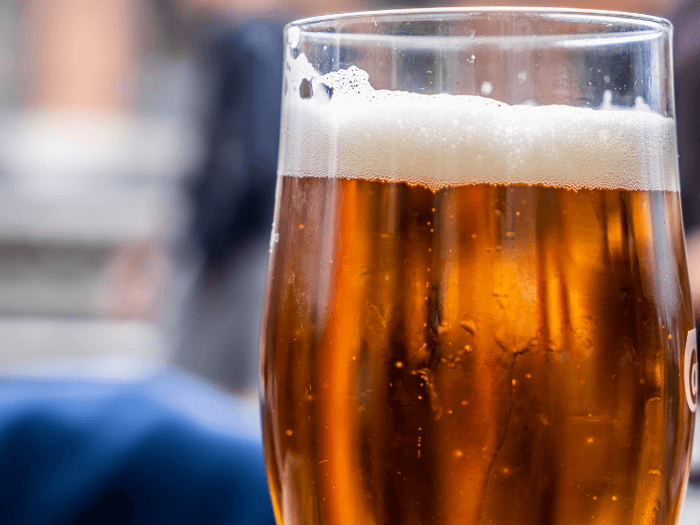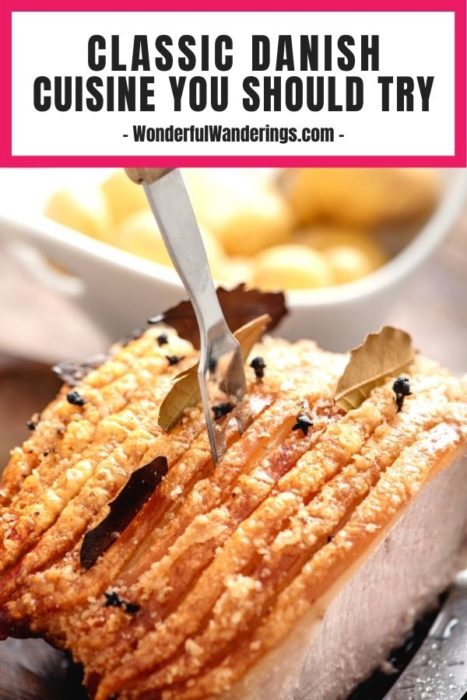Danish food is really interesting as it’s influenced by several different phases in Denmark’s history. Danish cuisine has a lot in common with the foods of neighboring countries as it shares common ancestors with the countries of Sweden, Norway, and Iceland.
From indulgent open sandwiches on dark rich rye bread, to savory tartlets and Danish pastries – part of this list of traditional Danish dishes and foods will be just what you expected, while part might surprise you.
Contents
A history of Danish food
Danish cuisine is known for being fairly simple – mostly meat, fish, rye bread, and potatoes. It’s true that there is a rustic part of the food scene in Denmark, harking back to the peasant Danish meals made before the Industrial Revolution.
But more recently Danish cuisine has undergone a transition. Danish people started exploring Europe more and returning with recipes from the Mediterranean and elsewhere. The concept of fast food arrived, and freezers were invented.
There were fears that classic elements of traditional Danish food would be lost. So a group of chefs led by Claus Meyer wrote a manifesto called the New Nordic cuisine. Meyer was interested in exploring how food used to be prepared before industrialized farming, and commited to use local and seasonal ingredients in his recipes.
The New Nordic cuisine led to the opening of new restaurants which would showcase local cuisine reimagined in a contemporary way. These include one in New York’s Grand Central Station, and New Nordic restaurant Noma in Copenhagen. Here, head chef René Redzepi uses novelty animals and herbs found in Scandinavia.
Danish food to try
Stegt flæsk med persillesovs
The Danish national dish “stegt flæsk med persillesovs” – which is pork with parsley sauce. The pork belly is fried until crispy and served with boiled potatoes.
Stegt flæsk med persillesovs is traditionally eaten on election night. In fact, there’s even a joke phrase about “eating valgflæsk” (eating election meat) referring to politicians making empty promises on their campaigns. The national dish of Denmark was put to the vote recently and this is the dish that won!
Flæskesteg
Roast pork is a popular Danish food, usually eaten for Christmas dinner, which happens on Christmas Eve. The skin is always cooked to a crisp, and comes with caramelized and boiled potatoes with red cabbage and gravy.
Putting roast pork in a sandwich is a Danish specialty – they call this, unsurprisingly, Flæskestegsandwich. Together with gherkins, cabbage, crackling, cold pork in a bun is a winning formula. Sometimes these pork baps are flooded in a thick rich gravy.
Oysters
There’s nothing quite like wading out into the waves to scour the shallow waters for oysters, before cracking open a cold bottle of champagne on the shore to enjoy with the day’s catch together with some rye bread.
Yup, oysters are a food from Denmark and you can join an oyster safari there where you can have exactly this experience just this!
Danish oysters are of the top-most quality, harvested from the wild in the North Sea and Limfjord in northern Jutland. The oysters from here are world-famous for their firm texture and refined taste.
Tarteletter
Tarteletter are really popular Dansih food made from puff pastry tart shells with a variety of fillings. They were first sampled in Denmark in the late 19th century and they gradually became a favorite the country over.
The Danish version of these flaky pastry tarts is generally savory – ingredients tend to showcase things like mushrooms, meat, and seafood. They’re a common traditional Danish dish to see being served up at parties or celebrations, or just snapped up as an appetizer or snack.
Smørrebrød/ Open faced sandwiches
Open faced sandwiches are a signature Danish food – known locally as smørrebrød. This basically does what it says on the tin – it’s like a sandwich, but the filling sits on top of the rye bread instead.
Common toppings for smørrebrød include liver pâté, eggs, fried fish, cold meat, potatoes, pickled fish, and salads. The bread itself is normally Denmark’s beloved buttered rye bread, which is dense, dark, and slightly sour in taste.
An upmarket variation of smørrebrød is stjerneskud. It’s the same in principle but a bit more fancy – topped with fried plaice fillet together with shrimps, white asparagus, lettuce, and caviar.
Risalamande
Another Christmas favorite is risalamande – a rich almond rice pudding. This isn’t just normal rice pudding – it’s delicious as a combination with chopped almonds, vanilla, whipped cream, and with a warm cherry sauce on top.
Frikadeller/ Danish meatballs
Danish meatballs are known as frikadeller – a classic Danish food. These are generally made from a mix of meats such as pork or beef. You can also get fish frikadeller (called fiskefrikadeller).
This meatball dish is often toppings for open faced sandwiches, served with potatoes and a parsley sauce, or cold with a refreshing remoulade.
Sausages
Sausages are a big component of Danish food culture, and are served up in many different shapes and sizes. The Danish hot dog (known as pølser) is a really popular street food. You can see hot dog stands all over cities like Copenhagen, and hot dogs are generally topped with fried onions, sliced pickles, raw onions, remoulade, ketchup, brown sauce, and mustard.
As well as the hot dog, stegt medister is another dinner that showcases the sausage. A meter-long in length, this red, spiced, minced pork sausage is eaten with a tasty sauce, potatoes, and red cabbage.
Danish pastries
There’s a bit of confusion when it comes to the pastries of Denmark. This is because what you might know as Danish pastries are in fact originally from Vienna – known in Denmark as wienerbrød (Vienna bread).
However, these were brought over in the 1840s and have been a popular food in Denmark ever since, now a definite favorite among the Danes. There’s a wonderful choice throughout the country’s bakeries, and some good ones to try include the Rum Snail or Cinnamon Snail pastries!
Koldskål med kammerjunker
The name of this is a bit of a mouthful for those who don’t speak Danish – it translates as cold buttermilk soup with biscuits. This is a sort of sweet soup or drink that’s sometimes eaten for dinner, and sometimes for dessert or just as a snack. The liquid itself is made from buttermilk, lemon, vanilla, egg, sugar, and soured milk or yogurt, and it’s topped with crunchy biscuits and sometimes fresh fruit such as strawberries.
Desserts
What do Danes eat for dessert? Well, mostly they eat a cake of some sort or some fruit, together with some whipped cream. Popular recipes include strawberry tart which can be found in pretty much every Danish bakery, and drømmekage (dream cake) made with coconut and brown sugar.
People in Denmark are also fond of chocolate, and candies made from licorice. One very traditional danish food often eaten as a dessert is rødgrød med fløde – red berry pudding. It’s packed with different berries, often served up with a large helping of cream.
Krebinetter
Krebinetter is a famous Danish food which can also be called Karbonader. It’s made up of pork patties, served up with a side dish of green peas and boiled potatoes. The patties are dipped egg and then coated in breadcrumbs before being pan-fried in butter until crispy.
Seafood
As a country with such a prolific coastline, it’s no wonder that Denmark is blessed when it comes to its seafood production. Pickled herring is one of the major popular Danish foods that people think about in regards to its seafood, but there are a whole host of other fish dishes to mention aside from herring.
Cod, and plaice fillet are high on the list, and shellfish in general is known to be of excellent quality from Denmark. Crab claws and Danish lobster tails are divine, and you can generally buy cheaper shellfish directly from the harbor and cook it at home yourself.
Brændende kærlighed
Brændende kærlighed is the name for this simple but tasty Danish food. It translates into English as “burning love” and it’s commonly served for Valentine’s Day.
It’s made up of a pile of mashed potato with a topping of fried onion and bacon – delicious.
Beer
Although Denmark is known world-wide for being the home of Carlsberg which was founded in Copenhagen in 1847, it’s not just the multinational brewer that makes the country interesting for its beer.
In the past 20 years there’s been an upsurge in microbreweries and more unusual tasting beers. Now there are over 200 craft breweries in the country, boasting a wide range of types varying from white wheat beers to infused sours.
The food of Denmark is sculpted by a rich combination of a traditional cuisine that stems from the past, and a more recent food culture leading from the story of the New Nordic manifesto and modern restaurants like Noma.
Although this list only scratches the surface for some of the key dishes and ingredients that Danish cuisine is known for, hopefully its tempted you to try some traditional Danish foods.
PIN FOR LATER
Find below the best travel guides about Denmark.

